We note below tax minimisation strategies to assist in you paying less tax.
Always comply with tax laws, tax minimised in this way is not tax avoidance.
Penalties for tax avoidance are high.
Move deductions for future years back to the current year
If cash flow permits:
Pay deductible expenses before year end instead of early in the next year such as:
stationery
Donations
Rental property expenses
Repairs
Motor vehicle expenses
Subscriptions
Insurances
Prepay travel expenses
Prepay loan interest and leases
Directors fees & bonuses
Maximise superannuation contributions
Write off bad debts and obsolete stock
Capital gains tax
Hold assets for a period greater than 12 months to be eligible to claim the capital gains tax discount.
Individuals and trusts can claim a 50% discount on the taxable profit and superannuation funds a 331/3% discount if the assets are held for a period greater than 12 months.
Companies are not eligible for a discount.
In view of this assets generally should be held as an individual or in a trust.
Small businesses have access to capital gains tax concessions which in some cases may result in nil tax payable on profit made when selling the business.
Operate in a corporate structure
Companies pay tax at a flat rate of 30% on profits, which is less than the top personal marginal tax rate of 46.5% (including medicare levy).
Dividends paid from profits which have been taxed carry a tax credit (franking credit) which is passed on to the shareholder as a tax offset.
Operate through a trust structure
Besides offering asset protection techniques discretionary trusts permit discretionary allocation of income.
Income may be allocated to lower tax paying individuals or entities thus minimising the overall tax payable on taxable income.
Income may also be allocated to children over 18 years of age who may be on a lower tax rate.
Whilst negative gearing is not suitable for discretionary trusts it may be catered for with the use of a fixed trust.
Fixed trusts allocate income based on the number of units held by the unit holder, the units may be used as security and hence negatively geared.
Use tax offsets and rebates to reduce tax payable
Invest in companies that pay franked dividends. Franked dividends carry with them a tax credit which is passed on to the shareholder.
A shareholder may be an individual, trust, partnership, company or superannuation fund.
Use medical expense offsets where applicable. Subject to income limits, generally total out of pocket medical expenses exceeding $2,120 (2013 year) attract a 20% tax offset.
Medical expenses paid to qualified medical practitioners such as doctors, dentists, physiotherapists, chiropractors (and others) plus prescription medicines paid to chemists qualify as expenses eligible for the offset.
Foreign tax offsets may also be used to reduce Australian tax payable.
Other tax offsets include:
Benefit recipients (government allowances)
Taxpayers with dependants
Private health insurance
Senior Australians
Superannuation paid on behalf of a spouse
Low income earners
Zone and overseas forces rebates
Superannuation
Salary sacrifice superannuation contributions which is a tax effective way of saving for your retirement.
The superannuation fund may have to pay 15% contributions tax but this is usually much lower than the personal marginal tax rate.
Your accountant may assist you to establish your own self managed superannuation fund to enable you to control your own superannuation investments.
Investing your superannuation portfolio in a tax effective way may reduce the contributions tax and overall tax payable by your superannuation fund.
Negative gearing
Borrowing funds to invest in income producing assets is a common used strategy to reduce tax.
If the cost of holding the asset exceeds the income earned from the asset, the shortfall may be offset against your taxable income & thus reduce your tax payable.
Leveraging your investment in this way may well be a successful wealth creation technique also.
Whilst negative gearing is commonly used for real estate investments it may also be used for other income producing assets such as shares.
It is noted that it is only the interest payable component of the loan that is tax deductible and not the capital reduction component of the loan.
It should also be noted that investments should not be made purely for the tax reduction component of the exercise.
The reduction in the tax payable should be viewed as "cream on the cake" and the investment must be able to "stand on it's own two feet."
Negative gearing is suitable for assets increasing in value.
Negative gearing of assets falling in value will amplify the loss incurred.
Ensure you obtain professional advice and fully understand the strategy that is to be undertaken to reduce tax before making a commitment.




